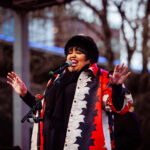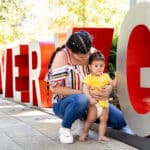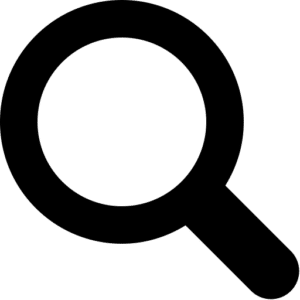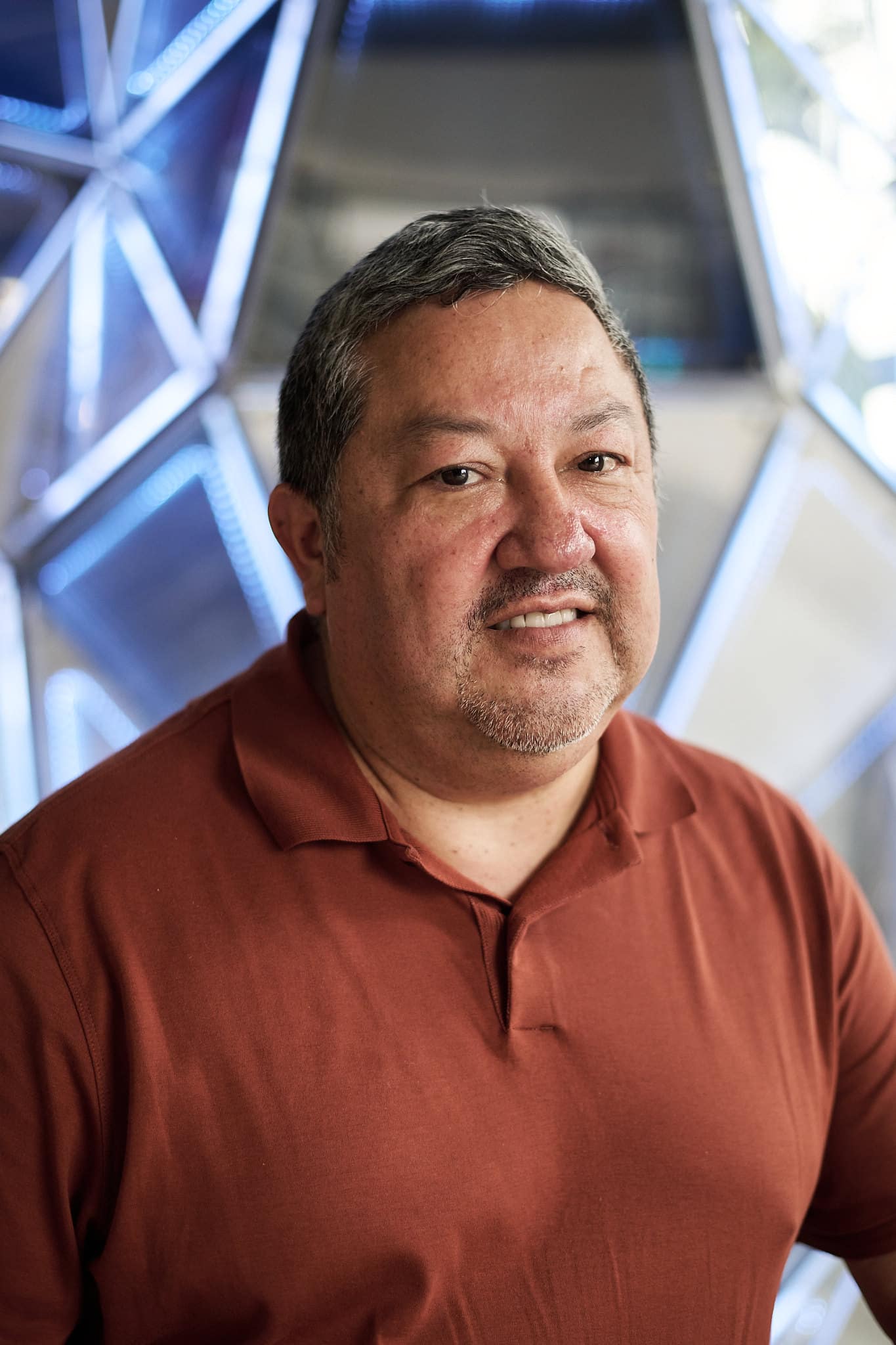By Holly Beretto
Growing up in Venezuela’s Andes region, Discovery Green Art Lab fellow Gerardo Rosales danced and played music before committing to visual arts in his late teens. Drawn to the folk art of the Andes – with its emphasis on the natural world – the self-taught Rosales created ceramics. That connection to the arts would take him from San Cristobal across the globe.
“Somehow, I knew I was always an artist,” he said. “Then a friend suggested I should work in 2D, and I started painting.”
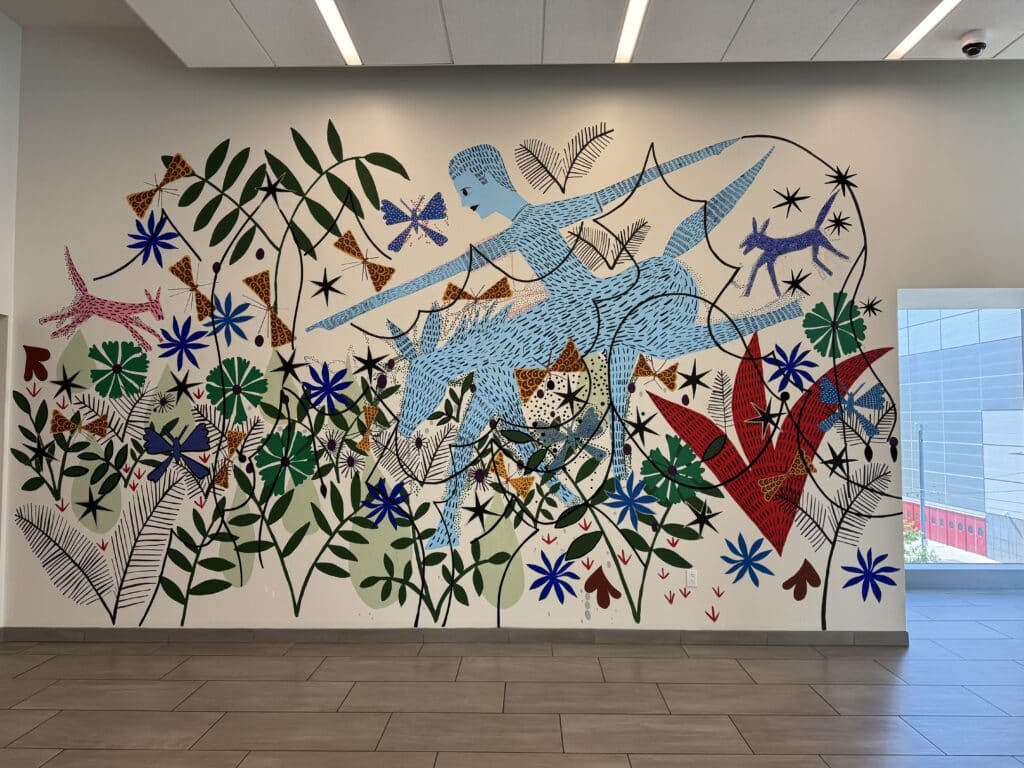
He began by capturing on canvas the landscape of his hometown. His paintings featured bright colors and fantastical forms that showcased plants and animals, rivers, mountains and people. In Rio Chiquito, the river, a bright azure, is both a rapidly flowing waterway and a literal person on horseback, which serves as a reminder that waters sustain life and are alive in their own way. In another work, the river is a horse, its head barely above the bottom of the canvas, its long tail cutting a dramatic diagonal line between verdant green on the right side of the canvas, and stylized black and red leaves and plants in deep blue on the other.
His reputation grew. Like many folk artists before him, his work demonstrated imagination, passion and innate talent. He displayed a personal connection to the images he was creating. When he became more aware of the world around him Rosales’ life – and his art – would be forever changed.
“In 1988 or ‘89, I became aware of the gender violence against the gay community,” he explained. “As a young gay man, it was very hard to get out of the closet. It was a very homophobic atmosphere. I used art to denounce that.”
He attended the Institute Armando Reveron in Caracas, Venezuela. The experience he said was a game changer because of the school’s liberal environment and his studies in Western art tradition. Just as he instinctively knew how to create his Andean home on canvas, in art school he instinctively understood how to connect the threads of art theory and design to his works. The education opened his mind and his creativity.
“My interest was not to copy reality or draw like Leonardo [DaVinci],” he said. “I wanted to develop imagery from my imagination and have it reflected in my work. I began experimenting with materials and techniques.”
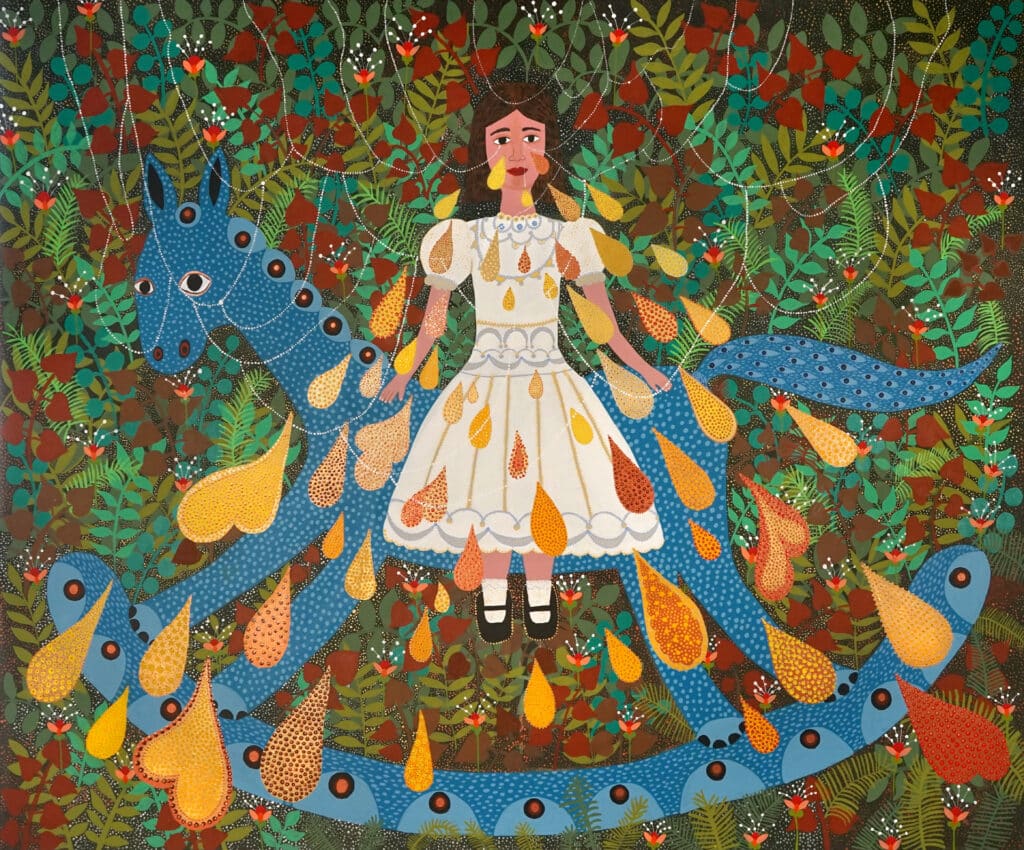
One of his works, Metallic Tears, shows this blending spectacularly. It’s a painting of a young girl, who looks like a doll. Her dress and black Mary Jane shoes borrow from traditional American folk art, as well as 19th century paintings. She sits, facing the viewer, on a blue rocking horse that’s larger than she is, against a background alive with sage and ivy-colored vines dotted with wine-red berries. Her paisley tears flow in giant drops down the painting, two of them morphing into hearts.
His desire for knowledge and further experimentation led him to a Master of Arts program at the Chelsea College of Art and Design in London, where he graduated in 1997. He then began a research program in fine art practice, theory and education.
“It changed how I saw the world,” he said of the experience. “I had this global perspective, and my art became more critical. This was during the time of HIV/AIDS, and I wanted to explore that.”
In a desire to give back to his community, he returned to Venezuela in 1999 to teach, but the country’s uncertain political situation led him ultimately to Houston, where he entered an alternative certification program to be an art teacher. He taught in the Houston Independent School District for 23 years, at an elementary school on the city’s west side, retiring in the summer of 2024.
Working with students, he found, was another way to bring a sense of himself to his work, as well as helping them understand the power art can have to give voice to others.
“I did projects with my students, displaying their work around the school,” he said. “That helped them see the benefits of it, that their work had value.”
He loved the spontaneity and enthusiasm of his students, but at the same time, his own work became more autobiographical as he was exploring social issues.
Rosales designed a mural for Bush Intercontinental Airport. He was also invited to create a sculpture for the Houston Botanic Garden that could withstand Houston’s outdoor elements. That project led to more experimentation, which is what ultimately led him to Discovery Green’s Art Lab.
“I had been doing more public shows over the last four years,” he said. “I knew the universe was pushing me in that direction. The program was a way to further grow my skills as a professional artist.”
He was eager to learn from mentors, and find new ways to share his ideas about the world in his artwork. Rosales was also interested in how technology can be incorporated into his pieces.
As he considers what to settle on for a project, he walked around Discovery Green.
“In this very dynamic space I saw children playing soccer, families strolling around, curious students on field trips having a good time and more,” he said. “These festive social gatherings together with the abundance of trees and the contemporary architecture that surround the park guide me in the process of generating ideas for the project.”
He wants his finished piece to celebrate the multicultural heritage of the community. He is developing a proposal that will ultimately lead to three-dimensional works that are rich in colors and an imagery that reflects on the nature of Houston and its people.
xxx
Gerardo Rosales is a fellow in the inaugural year of Discovery Green’s Art Lab – a groundbreaking mentorship program designed to support Houston artists seeking to create large-scale, multi-dimensional, public art.
“The Art Lab program grew out of Houstonians love for the large-scale, interactive art installation Discovery Green Conservancy has presented at the park since opening 16 years ago,” said President Kathryn Lott. “With Art Lab we seek to elevate the voices, ideas, and visions of artists from Houston onto the national public art landscape. Our goal is to keep connecting Houstonians and visitors with thought-provoking artworks, while creating opportunities for talented artists in our own backyard.”
The program is co-curated and co-created by Weingarten Art Group.
“A lifelong self-described storyteller, Gerardo Rosales’ artwork is at the unique intersection of folk imagery and social issues. He draws viewers in by using images of recognizable, playful objects and high color to create moments of connection – most frequently in monumental paintings and murals,” said Lea Weingarten, Principal of Weingarten Art Group. “Approached in the past to expand his practice from murals to larger scale, three-dimensional artworks, Gerardo did not have the specific technical expertise or the budget necessary to make this leap, until now. Art Lab’s innovative pairing of practical, hands-on mentorship with financial resources, will bring his vision of inspiring communities through large-scale public sculptures to life.”
Applications for a pop-up art installation at Discovery Green is open now. You can read the full request for proposals and learn more about Art Lab at www.discoverygreen.com/artlab.
